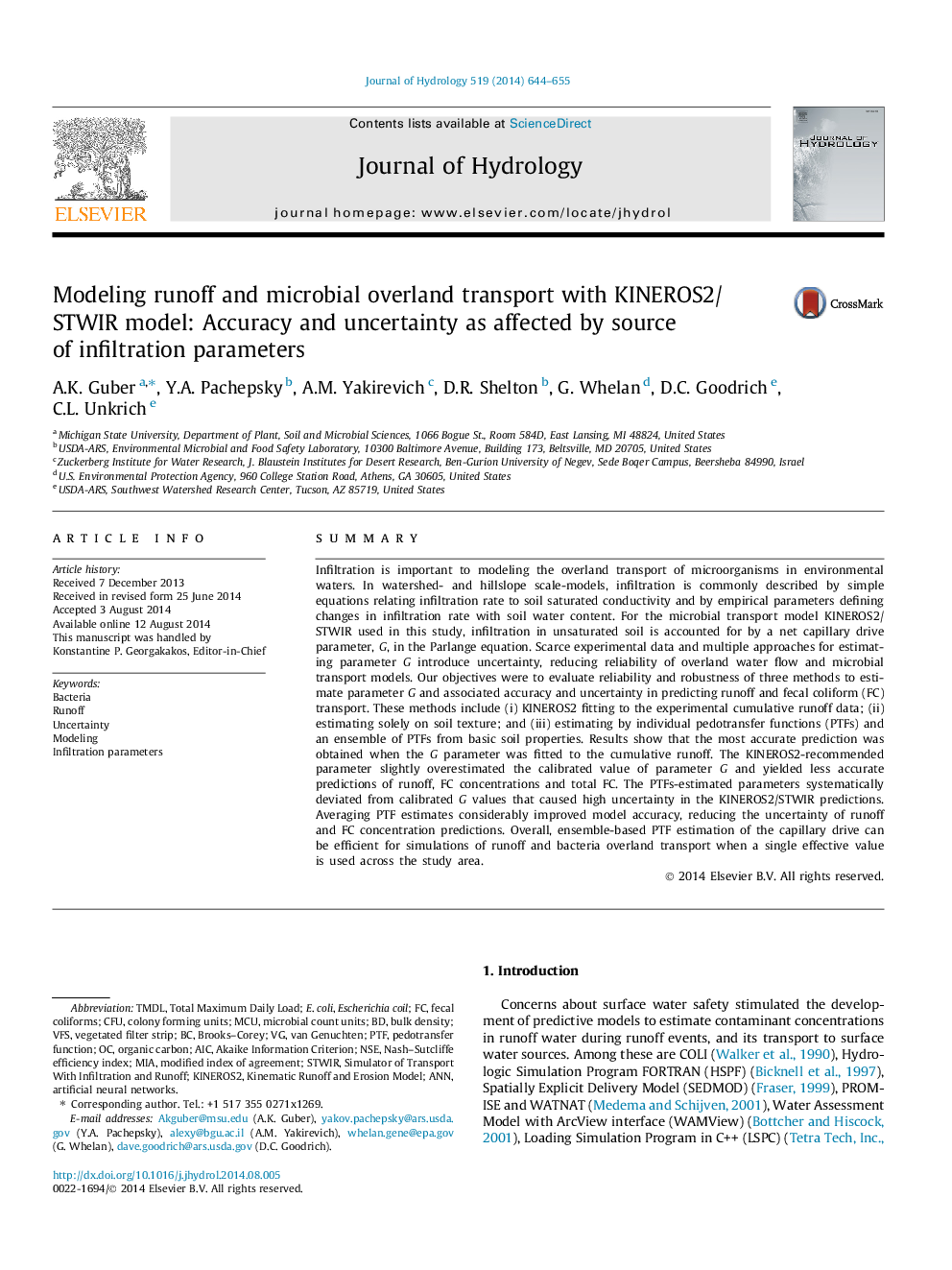| Article ID | Journal | Published Year | Pages | File Type |
|---|---|---|---|---|
| 6412460 | Journal of Hydrology | 2014 | 12 Pages |
â¢Overland fecal coliform (FC) transport was studied in a field experiment.â¢The FC transport was simulated with model calibrated and estimated parameters.â¢Parameters were estimated from basic soil properties using pedotransfer functions.â¢Model accuracy and uncertainty were tested for ensemble and multimodel approaches.â¢Multimodeling provided accurate and certain predictions of FC contents in runoff.
SummaryInfiltration is important to modeling the overland transport of microorganisms in environmental waters. In watershed- and hillslope scale-models, infiltration is commonly described by simple equations relating infiltration rate to soil saturated conductivity and by empirical parameters defining changes in infiltration rate with soil water content. For the microbial transport model KINEROS2/STWIR used in this study, infiltration in unsaturated soil is accounted for by a net capillary drive parameter, G, in the Parlange equation. Scarce experimental data and multiple approaches for estimating parameter G introduce uncertainty, reducing reliability of overland water flow and microbial transport models. Our objectives were to evaluate reliability and robustness of three methods to estimate parameter G and associated accuracy and uncertainty in predicting runoff and fecal coliform (FC) transport. These methods include (i) KINEROS2 fitting to the experimental cumulative runoff data; (ii) estimating solely on soil texture; and (iii) estimating by individual pedotransfer functions (PTFs) and an ensemble of PTFs from basic soil properties. Results show that the most accurate prediction was obtained when the G parameter was fitted to the cumulative runoff. The KINEROS2-recommended parameter slightly overestimated the calibrated value of parameter G and yielded less accurate predictions of runoff, FC concentrations and total FC. The PTFs-estimated parameters systematically deviated from calibrated G values that caused high uncertainty in the KINEROS2/STWIR predictions. Averaging PTF estimates considerably improved model accuracy, reducing the uncertainty of runoff and FC concentration predictions. Overall, ensemble-based PTF estimation of the capillary drive can be efficient for simulations of runoff and bacteria overland transport when a single effective value is used across the study area.
